Floating Floor vs Glue Down Bamboo: Which is Right for You?
Choosing the right flooring for your home is a significant decision that impacts both the aesthetic and functional aspects of your space. Bamboo flooring has become a popular choice due to its durability, eco-friendliness, and stylish appearance. When it comes to installation methods, two primary options are available: floating floors and glue-down floors. Understanding the differences, benefits, and drawbacks of each method can help you make an informed decision that best suits your needs.
What is Bamboo Flooring?
Bamboo flooring is made from the bamboo plant, a type of grass that grows quickly and is highly renewable. This makes bamboo an eco-friendly choice for flooring. Unlike traditional hardwood, which can take decades to mature, bamboo can be harvested in as little as five to seven years. Bamboo flooring is known for its strength and resilience, often outperforming hardwood in terms of durability.
There are different types of bamboo flooring, including solid bamboo and engineered bamboo. Solid bamboo is made from strips of bamboo that are glued together to form planks, while engineered bamboo consists of a bamboo veneer on top of a composite material. Both types can be installed as floating or glue-down floors, but engineered bamboo is often preferred for floating installations due to its stability.
Bamboo flooring comes in various styles and finishes, from traditional natural tones to darker, carbonized shades. The carbonization process, which involves heating the bamboo, gives it a rich, amber color but can also make it slightly softer. The choice of finish can affect the overall durability and maintenance requirements of the floor.
Another important aspect of bamboo flooring is its sustainability. Bamboo’s rapid growth rate and ability to regenerate without needing replanting make it a highly sustainable option. Additionally, bamboo flooring production typically involves fewer chemicals and less water than traditional hardwood, further enhancing its environmental credentials.
However, bamboo flooring is not without its challenges. It can be susceptible to moisture and humidity changes, which can cause warping or cracking if not properly maintained. Additionally, the quality of bamboo flooring can vary significantly between manufacturers, so it is crucial to choose a reputable supplier to ensure you get a high-quality product.
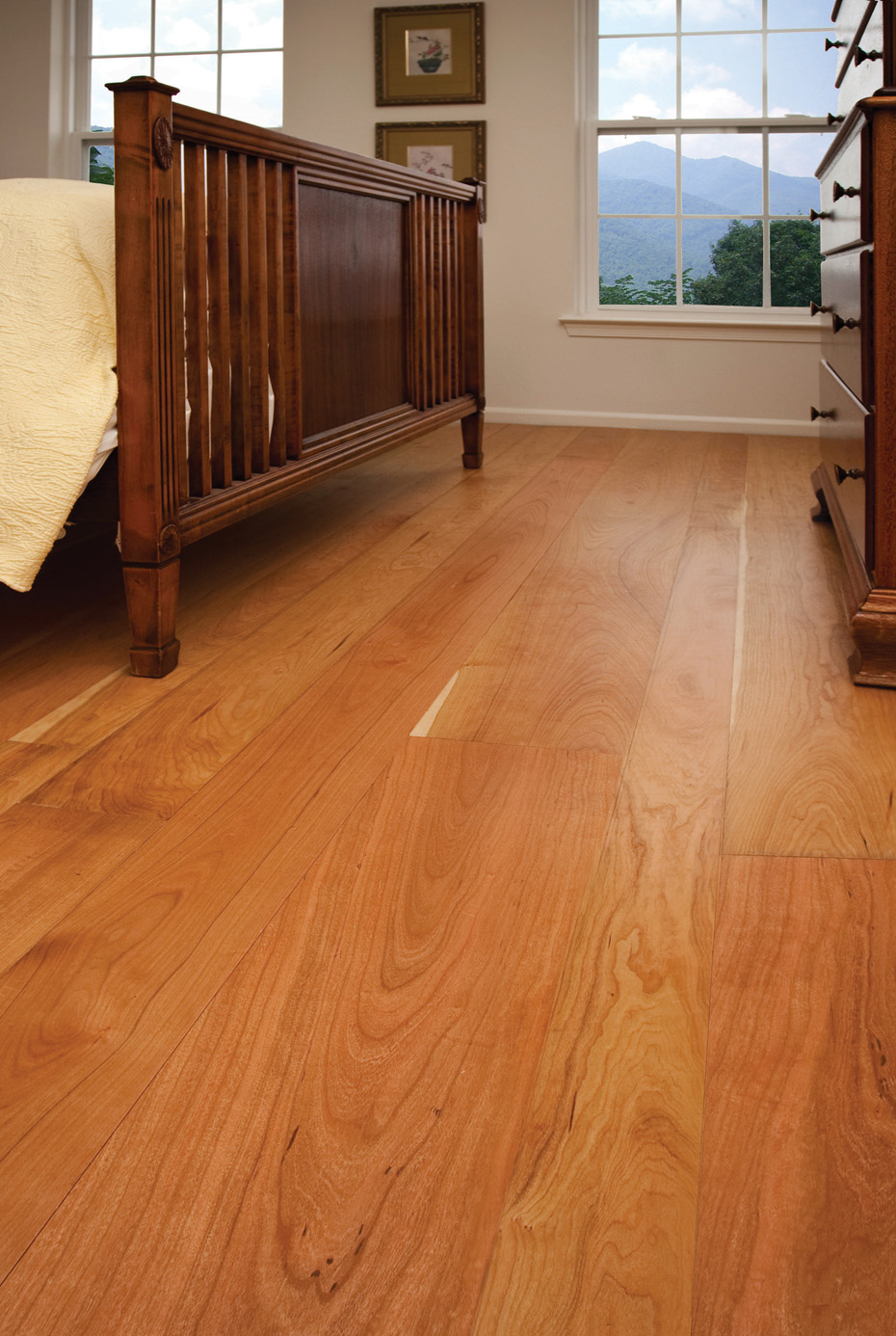
Understanding Floating Floors
A floating floor refers to a method of installation where the flooring planks do not adhere to the subfloor but instead “float” above it. The planks are attached using a click-and-lock mechanism, creating a continuous surface that rests on top of an underlayment. This method is popular for its ease of installation and flexibility.
One of the main advantages of floating floors is that they can be installed over a variety of subfloors, including concrete, plywood, and existing flooring. This versatility makes them a suitable option for many renovation projects. The underlayment used with floating floors provides a cushioning effect, which can enhance comfort underfoot and reduce noise transmission.
Floating floors are relatively easy to install, making them a popular choice for DIY enthusiasts. The click-and-lock mechanism allows the planks to snap together without the need for nails or glue. This method can save time and money on installation costs and allows for easier replacement of damaged planks. Additionally, floating floors can be installed quickly, often in a single day, making them a convenient option for homeowners looking for a fast flooring solution.
However, floating floors have some limitations. Because they are not attached to the subfloor, they can sometimes feel less solid underfoot compared to glue-down installations. This can be particularly noticeable in high-traffic areas or rooms where heavy furniture is used. Additionally, the edges of floating floors can be more susceptible to damage if not properly protected.
Moisture can also pose a challenge for floating floors. While the underlayment provides some moisture protection, it is essential to ensure the subfloor is dry and moisture barriers are in place if needed. Excessive moisture can cause the planks to warp or buckle, compromising the integrity of the floor. Proper acclimation of the flooring planks to the room’s humidity levels before installation is crucial to minimize these risks.
Despite these challenges, floating floors offer a practical and efficient solution for many homeowners. Their ease of installation, flexibility, and the variety of styles available make them a popular choice for those looking to update their flooring without the hassle of more complex installation methods.

Glue-Down Bamboo Flooring
Glue-down installation involves adhering the bamboo planks directly to the subfloor using a strong adhesive. This method provides a solid and stable flooring surface, making it a preferred choice for many professional installers and homeowners seeking a durable, long-lasting floor.
One of the primary benefits of glue-down bamboo flooring is its stability. The adhesive bond between the planks and the subfloor minimizes movement and reduces the risk of gaps or shifting over time. This stability is particularly important in high-traffic areas or rooms with heavy furniture, where a secure installation can prevent damage and prolong the life of the flooring.
The adhesive used in glue-down installations also acts as a sound barrier, reducing noise transmission between floors. This can be a significant advantage in multi-story homes or apartments where noise reduction is a priority. Additionally, the adhesive can provide some moisture resistance, although it is still essential to address any moisture issues in the subfloor before installation.
Glue-down bamboo flooring tends to have a more solid feel underfoot compared to floating floors. This can enhance the overall comfort and aesthetic appeal of the floor. The direct bond with the subfloor also allows for a more seamless look, with fewer visible seams or joints.
However, glue-down installation can be more time-consuming and labor-intensive compared to floating floors. The process requires careful preparation of the subfloor, including cleaning, leveling, and sometimes the application of a primer. Applying the adhesive and laying the planks correctly demands precision and attention to detail, often necessitating professional installation to achieve the best results.
Another consideration is the permanence of glue-down installations. Once the planks are adhered to the subfloor, they are challenging to remove. This can be a disadvantage if you anticipate needing to replace or update the flooring in the future. Additionally, the adhesive can be messy and requires adequate ventilation during installation to avoid inhaling fumes.
Despite these challenges, glue-down bamboo flooring offers a durable and stable solution for those seeking a long-lasting floor. Its solid feel, noise reduction, and seamless appearance make it a popular choice for many homeowners and professionals.

Comparing Costs
Cost is a significant factor when deciding between floating and glue-down bamboo flooring. Both installation methods have their own cost considerations, including materials, labor, and potential long-term expenses. Understanding these costs can help you make a more informed decision that fits your budget.
The upfront cost of floating floors is generally lower compared to glue-down installations. The click-and-lock mechanism of floating floors simplifies the installation process, reducing labor costs. Additionally, floating floors can often be installed by homeowners themselves, eliminating the need for professional installation fees. The cost of the underlayment, which is necessary for floating floors, is typically less than the cost of adhesive used in glue-down installations.
Glue-down installations, while more expensive upfront, can offer cost savings in the long run due to their durability and stability. The adhesive used in glue-down installations provides a strong bond that reduces the likelihood of shifting or gaps, which can minimize repair and maintenance costs over time. However, the labor-intensive nature of glue-down installations often requires professional installers, adding to the overall cost.
When comparing costs, it’s also important to consider the type of bamboo flooring you’re installing. Engineered bamboo, which is often used for floating floors, can be more expensive per square foot than solid bamboo. However, engineered bamboo offers greater stability, especially in areas with fluctuating humidity levels, which can justify the higher cost.
Additional costs to consider include subfloor preparation and potential moisture barriers. Both installation methods require a clean, level subfloor, but glue-down installations may necessitate more extensive preparation, including the use of primers or leveling compounds. Moisture barriers are essential for both methods in areas prone to moisture, adding to the overall expense.
Finally, consider the long-term maintenance costs. Floating floors may require more frequent adjustments or repairs due to their less secure installation, while glue-down floors tend to be more stable and durable over time. Weighing these factors against the initial installation costs can provide a clearer picture of the total investment required for each method.

Durability and Maintenance
Durability and maintenance are critical factors when choosing between floating and glue-down bamboo flooring. Each method has its own strengths and challenges that can impact the longevity and upkeep of your floor.
Floating bamboo floors, while easy to install, may be less stable compared to glue-down floors. The floating nature of the installation means that the planks are not fixed to the subfloor, which can lead to movement or shifting over time. This can be particularly problematic in high-traffic areas or rooms with heavy furniture. Regular maintenance, such as checking and adjusting the planks, may be necessary to keep the floor in good condition.
Glue-down bamboo floors offer superior stability due to the adhesive bond between the planks and the subfloor. This stability reduces the risk of movement and gaps, making glue-down floors a more durable option in the long run. The solid feel underfoot provided by glue-down installations also enhances the overall comfort and aesthetic appeal of the floor.
When it comes to maintenance, both floating and glue-down floors require regular cleaning to keep them looking their best. Sweeping or vacuuming to remove dust and debris, along with occasional damp mopping, can help maintain the floor’s appearance. However, it’s important to avoid excessive water or harsh cleaning chemicals that can damage the bamboo and the sealant.
Floating floors may require more frequent maintenance due to their susceptibility to movement and gaps. Checking the planks periodically and making necessary adjustments can help prevent issues from becoming more significant problems. On the other hand, glue-down floors, with their secure installation, generally require less frequent maintenance, although they still need regular cleaning and occasional re-sealing to maintain their protective finish.
Both types of installations can benefit from protective measures such as using felt pads under furniture legs and placing mats in high-traffic areas. These measures can help prevent scratches and dents, prolonging the life of the floor. Additionally, controlling indoor humidity levels is crucial for both floating and glue-down bamboo floors to prevent warping and cracking.
Ultimately, the choice between floating and glue-down bamboo flooring will depend on your specific needs and preferences. Consider factors such as the level of foot traffic, the presence of heavy furniture, and your willingness to perform regular maintenance when making your decision.

Environmental Considerations
Bamboo flooring is often touted for its eco-friendly qualities, but the environmental impact can vary depending on the installation method. Understanding the environmental considerations of floating versus glue-down bamboo flooring can help you make a more sustainable choice.
Bamboo itself is a highly renewable resource, growing much faster than traditional hardwood trees. Its rapid growth rate and ability to regenerate without needing replanting make it an eco-friendly material for flooring. Additionally, bamboo production typically involves fewer chemicals and less water compared to hardwood, further enhancing its environmental credentials.
Floating floors, due to their click-and-lock installation method, often involve fewer chemicals and adhesives. This can reduce the emission of volatile organic compounds (VOCs), which are harmful pollutants that can affect indoor air quality. The underlayment used in floating floors can also be made from eco-friendly materials such as cork or recycled foam, adding to the sustainability of this installation method.
Glue-down installations, while providing greater stability, typically involve the use of adhesives that can contain VOCs. However, advancements in adhesive technology have led to the development of low-VOC and zero-VOC adhesives, which can mitigate this environmental concern. Choosing eco-friendly adhesives can help reduce the overall environmental impact of glue-down bamboo flooring.
The longevity and durability of glue-down installations can also contribute to their sustainability. A long-lasting floor reduces the need for replacement, minimizing the use of resources and the generation of waste. Additionally, some bamboo flooring products are available with certifications such as the Forest Stewardship Council (FSC) certification, which ensures that the bamboo is harvested sustainably and responsibly.
Both floating and glue-down bamboo floors can be recycled at the end of their life, although the process may differ. Floating floors, with their click-and-lock mechanism, can be more easily disassembled and reused or recycled. Glue-down floors, on the other hand, may require more effort to remove and recycle due to the adhesive bond with the subfloor.
When choosing between floating and glue-down bamboo flooring, consider the environmental impact of both the materials and the installation process. Opting for low-VOC adhesives, eco-friendly underlayment, and sustainably sourced bamboo can help reduce the overall environmental footprint of your flooring project.
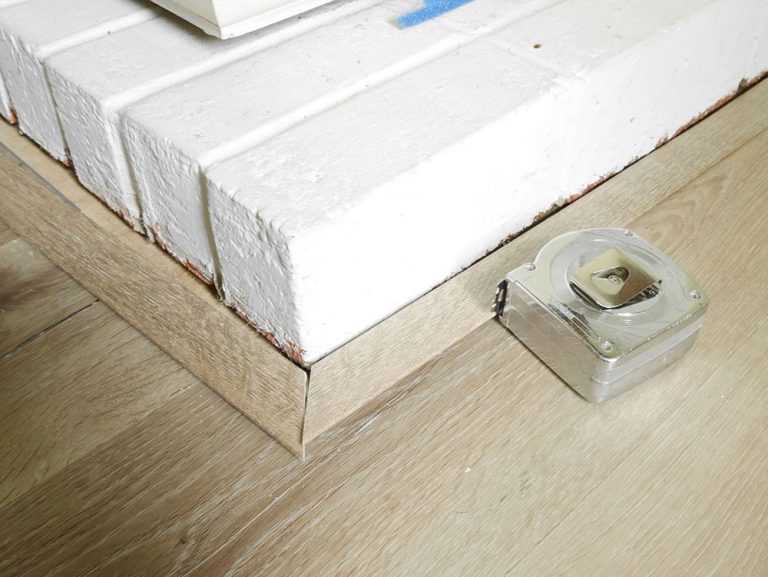
Common Mistakes to Avoid
Choosing and installing bamboo flooring, whether floating or glue-down, can come with its own set of challenges. Avoiding common mistakes can ensure a successful installation and long-lasting performance.
One common mistake is not properly acclimating the bamboo planks before installation. Bamboo, like other natural materials, can expand and contract with changes in temperature and humidity. Failing to acclimate the planks to the room’s conditions can lead to warping or gaps after installation. Always store the planks in the installation room for at least 72 hours before starting the project.
Improper subfloor preparation is another frequent error. Both floating and glue-down installations require a clean, level, and dry subfloor. Skipping this crucial step can result in an unstable or uneven floor. For glue-down installations, additional preparation such as priming or leveling compounds may be necessary to ensure a strong adhesive bond.
Using the wrong adhesive for glue-down installations can compromise the floor’s stability and durability. Not all adhesives are suitable for bamboo flooring, and using a product that does not provide a strong bond or that contains high levels of VOCs can lead to problems down the line. Always choose an adhesive recommended by the flooring manufacturer and consider low-VOC options for a healthier indoor environment.
Neglecting to leave an expansion gap around the perimeter of the room is a mistake that can cause significant issues. Bamboo flooring needs room to expand and contract with changes in humidity. Without an adequate expansion gap, the floor can buckle or warp. Be sure to leave a gap of at least 1/4 inch around the edges of the room, which can be covered by baseboards or molding.
Overlooking the importance of regular maintenance can shorten the lifespan of your bamboo floor. Both floating and glue-down floors require routine cleaning and protective measures to prevent damage. Failing to clean up spills promptly, neglecting to use furniture pads, or ignoring the need for re-sealing can lead to scratches, stains, and other damage.
Finally, attempting a DIY installation without proper knowledge or tools can lead to mistakes and poor results. While floating floors are more DIY-friendly, they still require attention to detail and correct technique. Glue-down installations, in particular, are best left to professionals who have the experience and equipment to ensure a successful outcome. Investing in professional installation can save you time, money, and frustration in the long run.
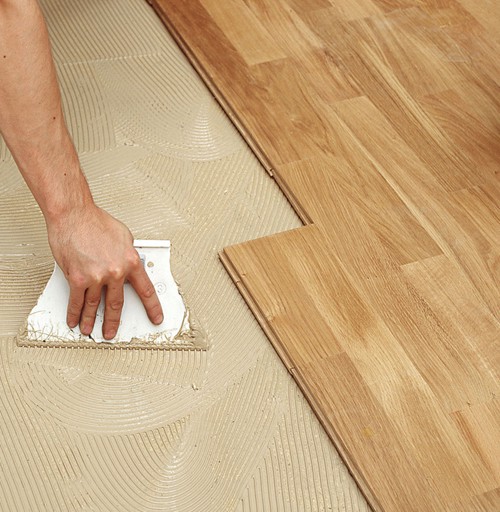
What are the main differences between floating and glue-down bamboo flooring?
Floating bamboo flooring is installed using a click-and-lock mechanism that allows the planks to snap together and float above the subfloor on an underlayment. This method is relatively easy to install, making it a popular choice for DIY projects. Floating floors can be installed over various subfloors, including existing flooring, and offer flexibility and ease of replacement.
Glue-down bamboo flooring, on the other hand, involves adhering the planks directly to the subfloor using a strong adhesive. This method provides a more stable and solid feel underfoot, reducing the risk of movement and gaps over time. Glue-down installations are typically more labor-intensive and may require professional installation to achieve the best results.
Which installation method is more durable?
Glue-down bamboo flooring is generally more durable due to the strong adhesive bond with the subfloor. This stability reduces the risk of movement, gaps, and warping, making it a suitable choice for high-traffic areas and rooms with heavy furniture. The solid feel underfoot also enhances the floor’s overall durability and comfort.
Floating floors, while easier to install, may be less stable and more susceptible to movement over time. Regular maintenance and adjustments can help mitigate these issues, but glue-down installations typically offer greater long-term durability and stability.
Can I install bamboo flooring in high-moisture areas?
Bamboo flooring is not recommended for high-moisture areas such as bathrooms or basements due to its susceptibility to moisture and humidity changes. Excessive moisture can cause the bamboo to warp, buckle, or crack. If you choose to install bamboo flooring in a moisture-prone area, ensure it is properly sealed and take extra precautions to protect it from water exposure, such as using moisture barriers and maintaining consistent humidity levels.
How do I maintain bamboo flooring?
Maintaining bamboo flooring involves regular cleaning and protective measures to prevent damage. Sweep or vacuum the floor frequently to remove dust and debris, and mop with a damp cloth or mop and a mild pH-neutral cleaner. Avoid using harsh chemicals or excessive water, as these can damage the bamboo and the sealant.
Protect the floor from scratches and dents by using felt pads under furniture legs and placing mats in high-traffic areas. Monitor the indoor humidity levels to prevent warping and cracking, and re-seal the floor periodically to maintain its protective finish. Regular maintenance and prompt attention to spills and stains will help keep your bamboo flooring looking its best.
Is professional installation necessary for bamboo flooring?
While floating bamboo floors can be installed by DIY enthusiasts, glue-down installations are more complex and typically require professional installation to achieve the best results. The precision and expertise needed for applying adhesive, preparing the subfloor, and laying the planks correctly are crucial for a successful glue-down installation. Investing in professional installation can ensure a stable, durable floor and save you time and frustration in the long run.

Do You Have To Glue Vinyl Flooring Down

Glue Down Bamboo Floor – Flooring Guide by Cinvex
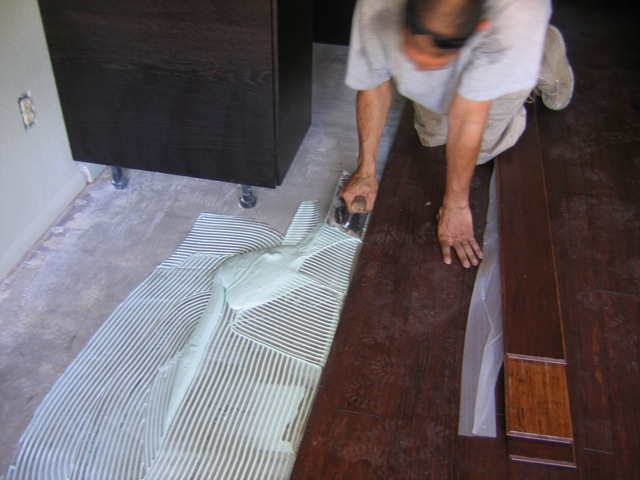
Floating Or Glue Down Vinyl Floor – Flooring Tips

Glue Down Wood Flooring Vs Floating
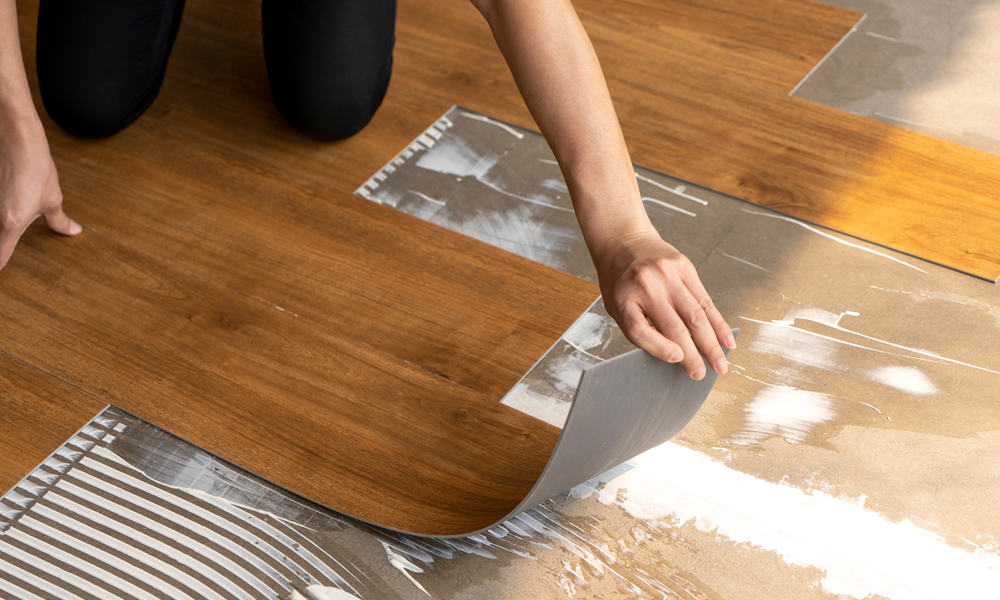
Glue Down Wood Flooring Vs Floating – Flooring Tips
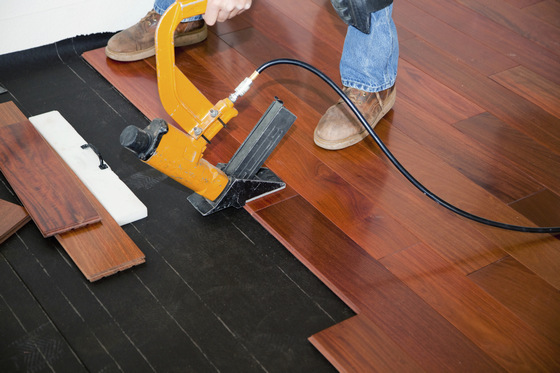
Related Posts: